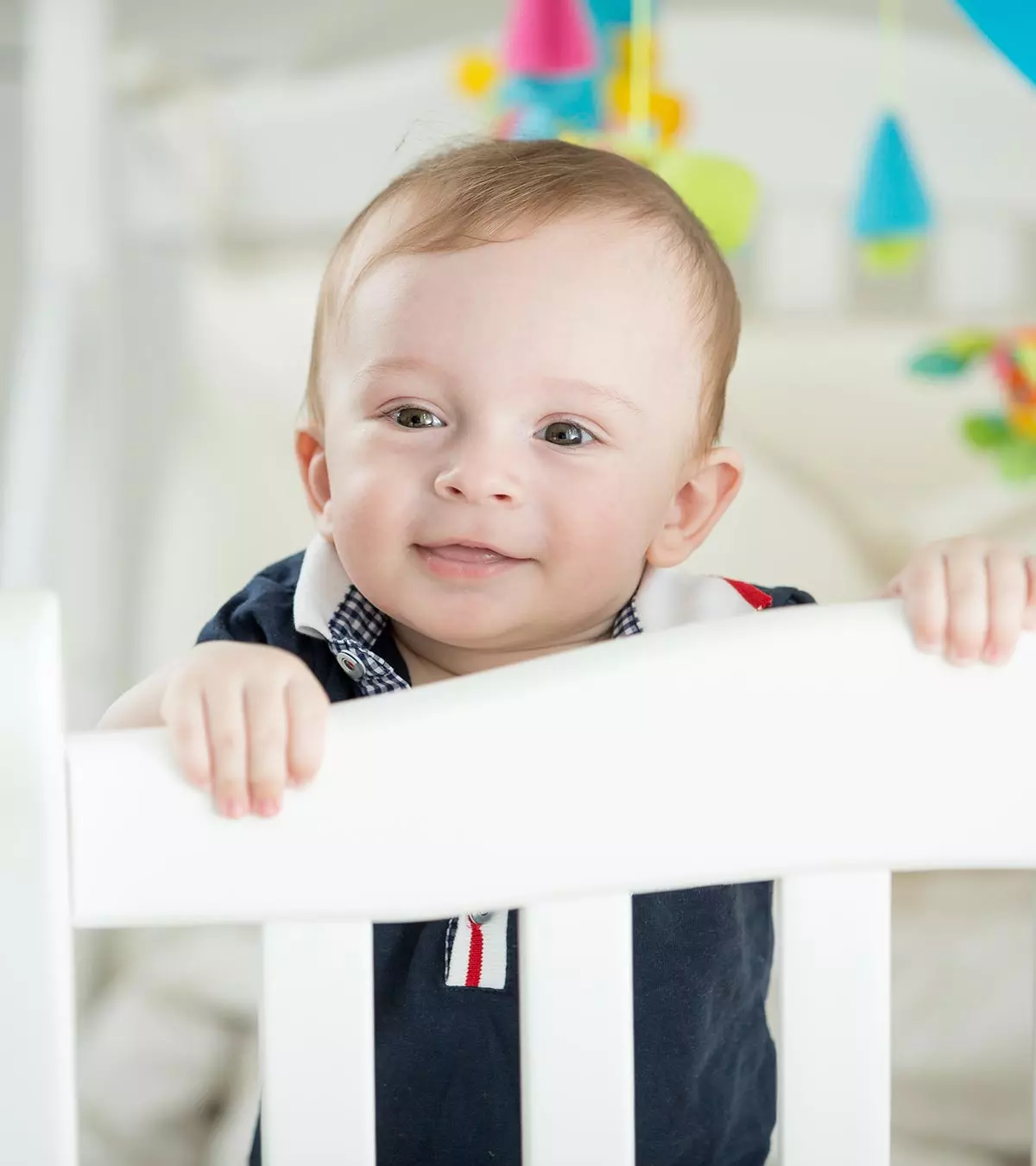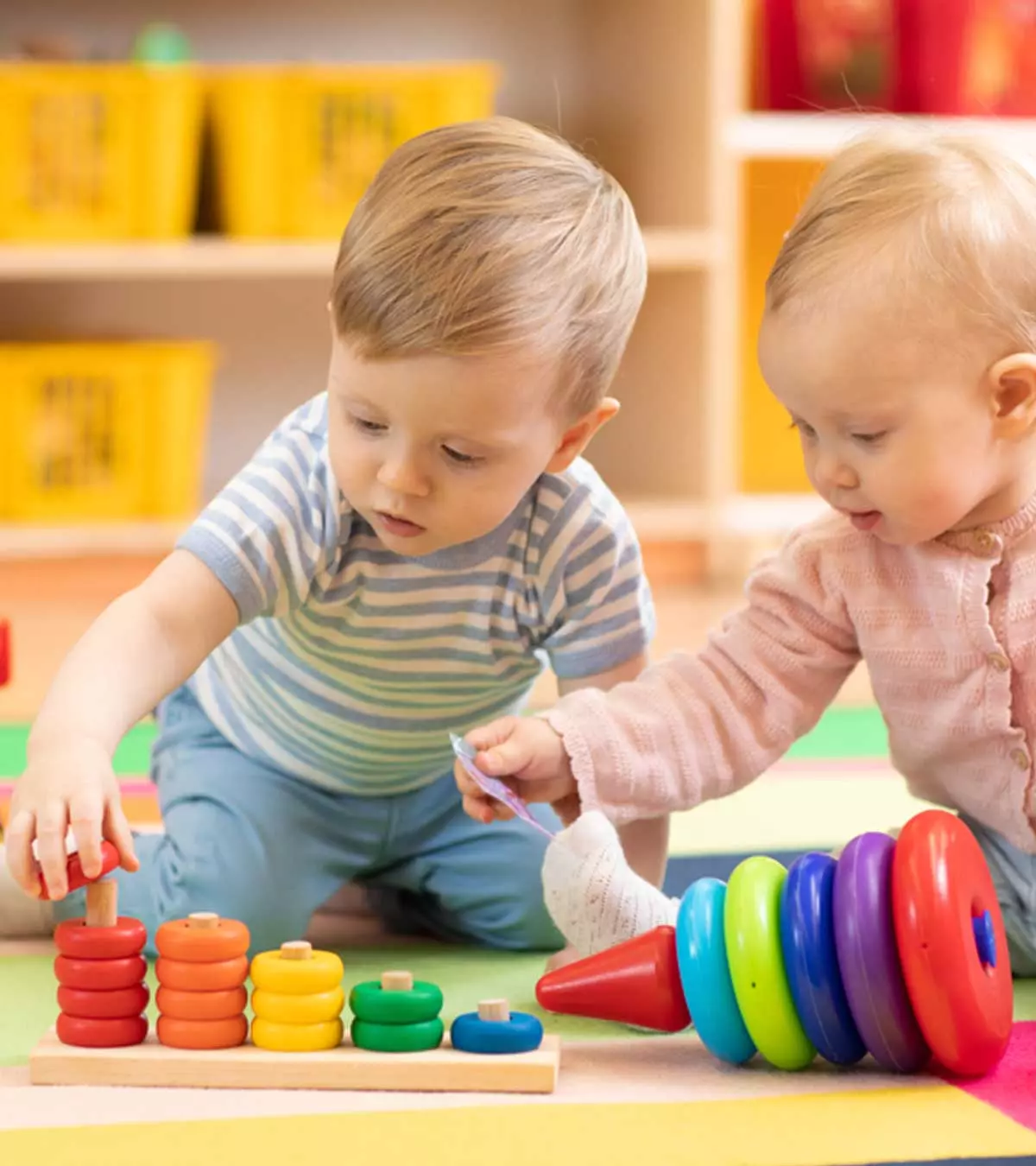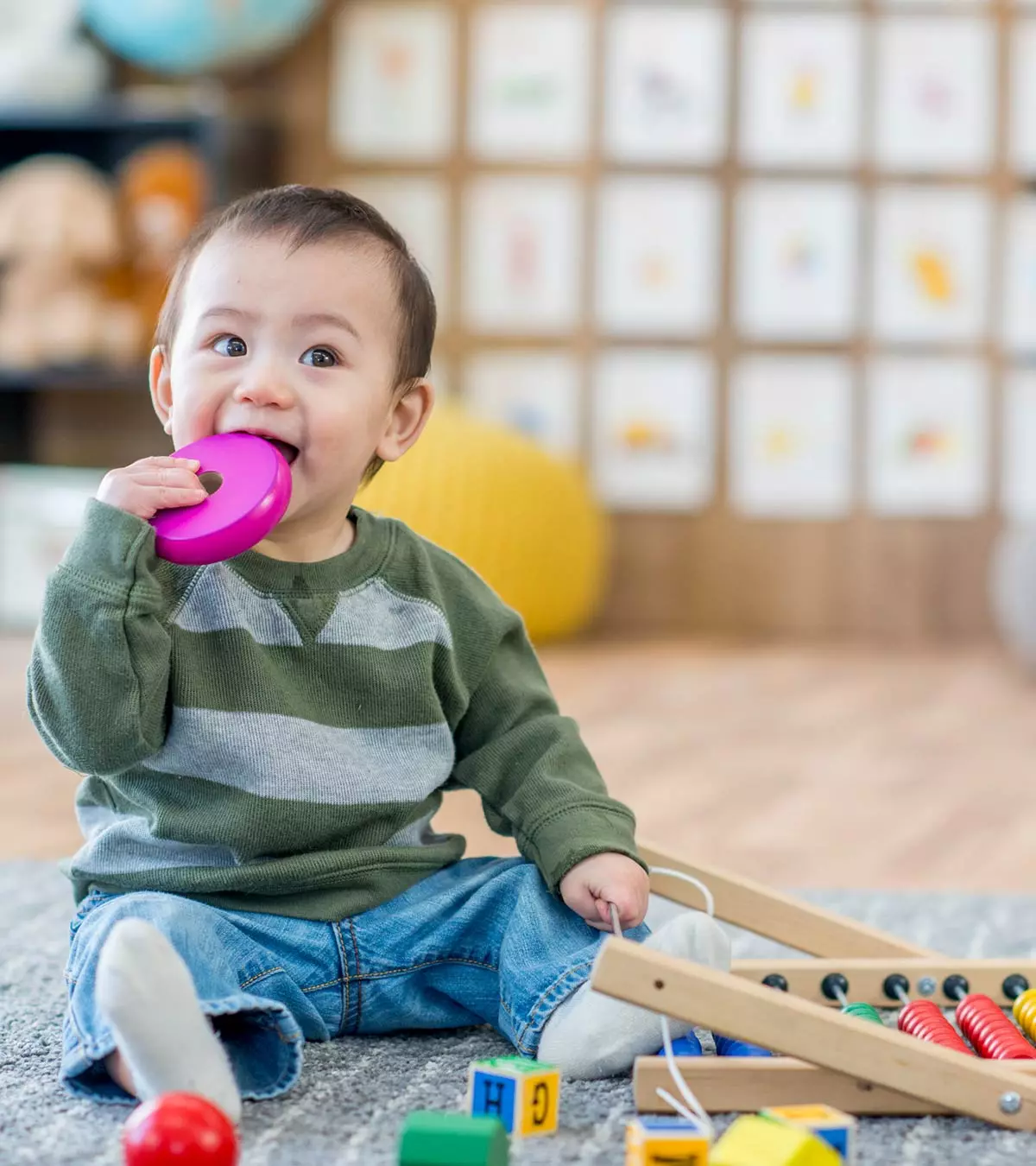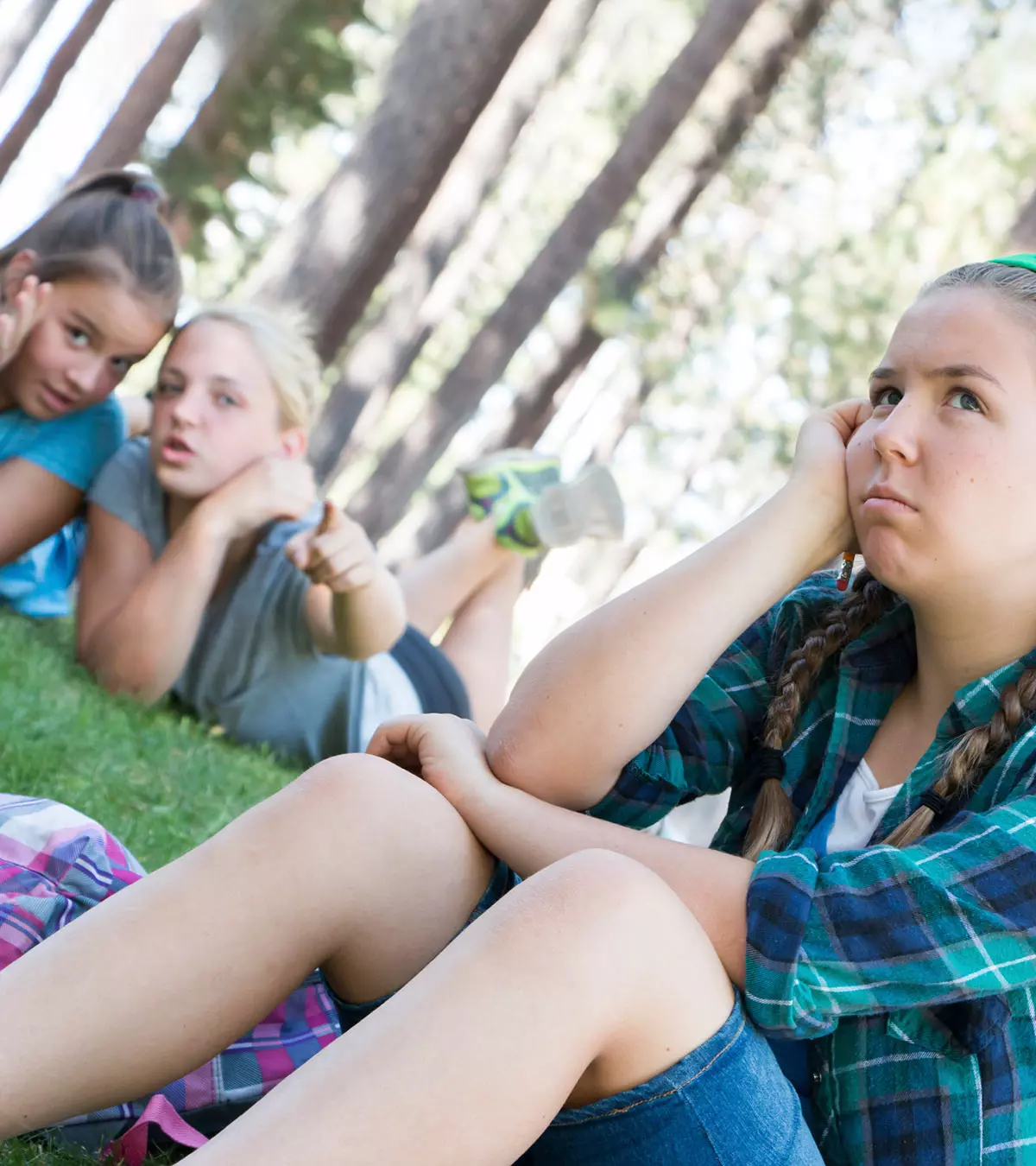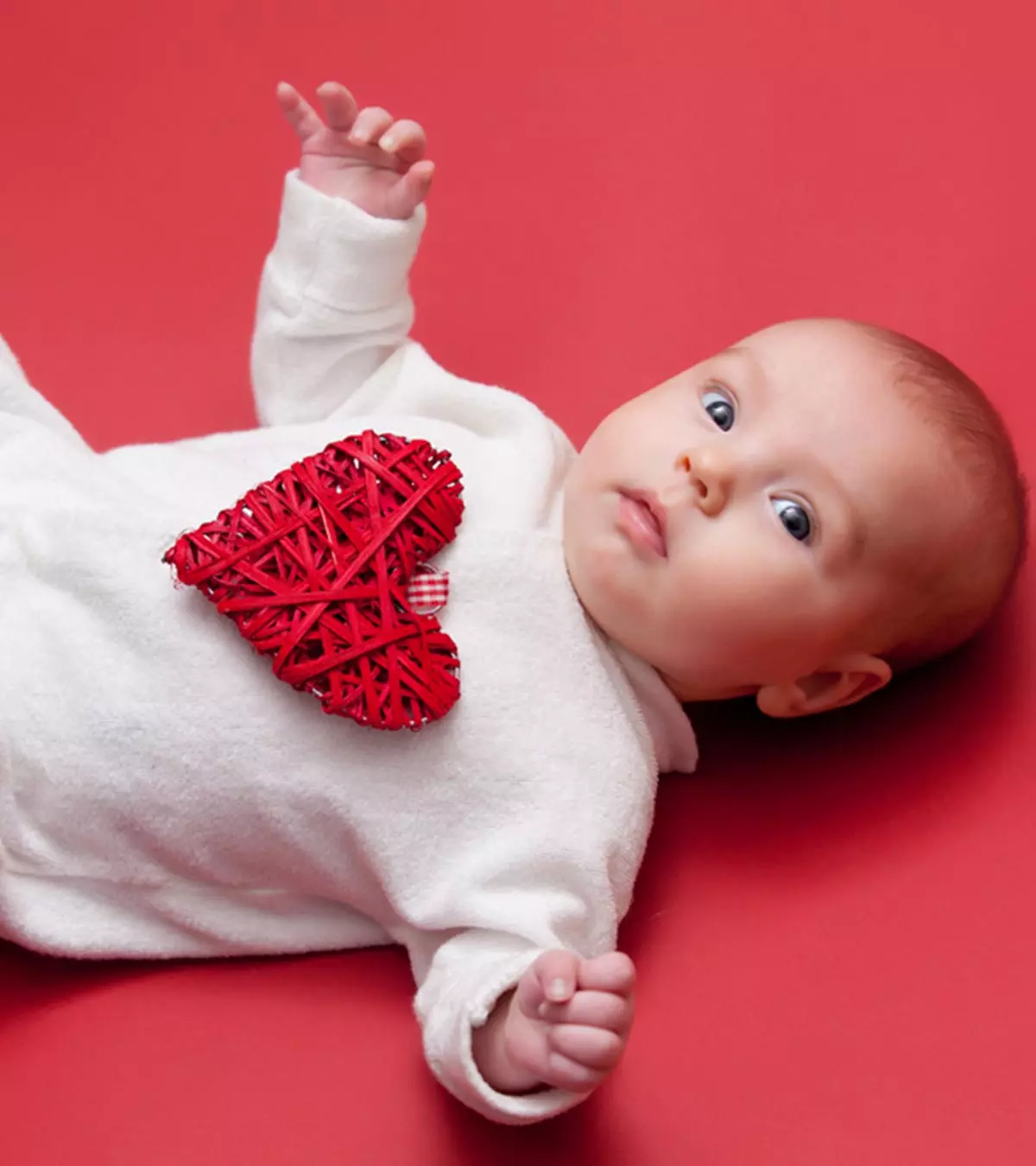
Image: iStock
A baby cooing is perhaps the most pleasant sound for a parent. While the tiny ones announce their entry into the world through crying, cooing is their first language and communication cue. It is one of the first crucial milestones they develop in their first year. No wonder it is no less than soothing music for parents. In this post, we help you explore more about baby cooing. We have also included information on its benefits, ways to encourage, and, of course, when you can expect your baby to coo.

Key Pointers
- Babies communicate by cooing when they are around two months old.
- Cooing helps them bond with parents and develop communication skills.
- Encourage cooing in babies through different ways.
What Is Cooing?
Cooing is the spontaneous behavior of an infant to communicate their needs and feelings.
It typically involves the production of simple vowel sounds, often combined with a consonant (1). These sounds could include monosyllables, such as “ah,” “ooo,” or “eee,” and disyllables, such as “ah-ah,” or “ooh-ooh.”
When Do Babies Start Cooing?

Generally, a baby starts to coo or make gurgling sounds when they are about two months old (2). At this age, they also start responding to sounds, smiling, and mimicking your facial expressions (2) (3).
As is true in all milestones, some babies may take more time to start cooing, as all babies develop at their own pace. However, if your baby does not coo by three months, consult your baby’s pediatrician. Early intervention can be crucial in addressing any underlying developmental issues.
 Do remember
Do rememberHow Does Cooing Help Babies?
Here are a few ways in which cooing helps babies (2) (4).
- Skill development: If your cherubic baby starts cooing, it means your baby is developing communication skills. It is your baby’s attempt at vocalizing their needs. As time passes, they will begin to understand more complex sounds, which may help build cognitive skills.
- Mouth exercise: Cooing involves different parts of the mouth. A baby starts exercising their lips, palate, and tongue as well as jaw with their constant cooing and gurgling.
- Bonding:

It helps create a special bond between you and your child. When you make certain sounds and gestures, they start acknowledging them and try to mimic them.
- Understanding needs: Cooing is your infant’s means of expression. Through this, they try to communicate their pain, happiness, hunger, etc. It will give you first-hand experience of your baby’s reactions and help you read your baby’s cues better.
- Language development: The first language of a child, besides crying or bawling, is cooing. Cooing offers your infant vocal practice and prepare them to learn a language.
- Auditory development: Babies learn to process sounds partly by making their own noises (5). When babies coo, they hear themselves, which helps them connect making sounds with hearing sounds. This is important for learning to tell different sounds apart and eventually understanding and speaking language.
How To Encourage Babies To Start Cooing?
It is absolutely divine to see a cuddly one react to your “coochi coos” with their coos or with a smile. Here’s how you can encourage them to coo and use their pre-language development skills such as facial expressions, imitation, gestures, and eye contact (2) (3) (4) (6) (7) (8) (9):
1. Communicate with your baby
Communication is crucial for any language development. Speak to your child as it will encourage them to respond to your gestures. You can engage them by showing them a toy and describing it. Repetitive use of common words in your everyday conversation can help your child associate words with objects.
2. Keep speaking frequently

Babies understand words long before they begin to speak. Speak to them in the language you speak. Babies love to imitate. If you show excitement, they will respond to you in the same way. Keep speaking, whether you are feeding them or taking them out for strolls. Touch your nose, lips, and eyes, and encourage them to imitate you.
3. Tell them what you are doing
If you are giving a bath to your child, show them their tub before putting them in it. Tell them how you form bubbles from the shampoo. If you are working in a kitchen, show them different vegetables and fruits. When you take them out in a car, let them peep out of the window, and talk to them about the different vehicles moving by. Such cognitive activities for infants can help enhance their skills, which is crucial for early language development.
4. Use actual words
Use actual words while talking to your baby. Say “orange” instead of “olange”. Speaking to your baby using “baby talk” is not encouraged, because the child loves to imitate you. Wrong words will send the wrong signal to the child. It’s okay to blabber with them once in a while, though.
You might think it’s early to introduce them to words, but you’re helping them learn their first words. When they say their first words, which generally happens at around six months, you would want to hear real words, such as “mama” or “dada.”
According to Nanay Abi, a mother and blogger, ”Jek (JD’s father) and I don’t talk to JD (son) like “achooo chhoo chhooo” or “ooooh ooohh aahhhh aaaah”. It sounds alien to me or more like a monkey talking. How in the world will the baby understand those “words” (they’re not even words you’ll find in a dictionary). As much as possible, I talk to JD like an adult. How will you react if there are people talking to you in a different language and laughing at the same time? For me, it’s irritating and unrespectful (i).”
 Quick tip
Quick tip5. Maintain eye contact
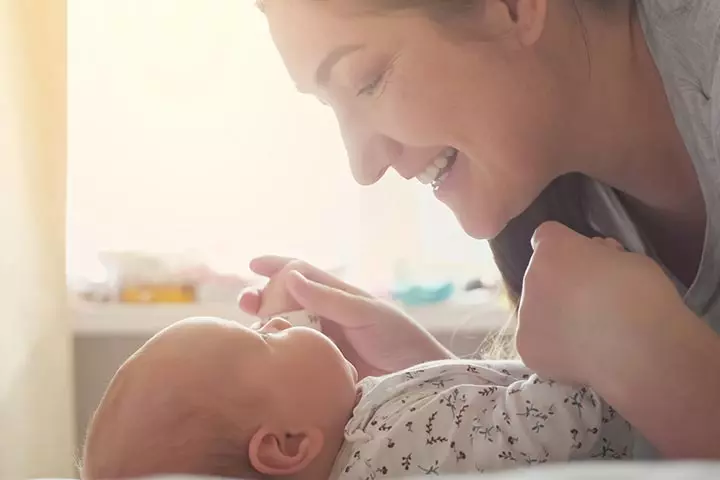
Always maintain eye contact with your newborn to attract their attention. Babies start paying attention to objects and faces and recognizing people at a distance at around two months. Eye contact is a non-verbal form of communication that can help them build focus. It can also help them differentiate between you and a stranger.
6. Repeat your child’s sounds
Whatever sound your child makes, try to repeat it. Always react enthusiastically to your baby’s sounds. Enjoy this two-way conversation. This will let your tender little baby know that you are there to fulfill their needs.
 Point to consider
Point to consider7. Sing to your baby
We all have slept to the lullabies sung to us by our parents or grandparents. Do the same with your baby. See your baby’s response when you sing to them. They might start cooing along with you and gradually go into a deep slumber. Interestingly, music also encourages cooing in a baby.
A study conducted by scientists at the University of Washington’s Institute for Learning & Brain Sciences (I-LABS) has shown that music helps improve infants’ cognitive skills and the ability to detect patterns in sounds (10).
8. Read them a story
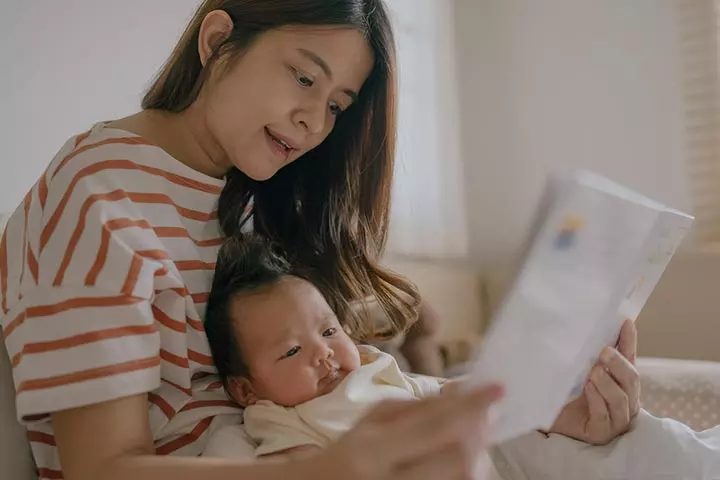
It is never too early to acquaint your child with books. Read out stories to your child by emoting with expressions. Reading gives your baby an opportunity to hear new sounds. Colorful pictorial images of the storybook can excite them, too. While reading a story, emphasize the simple words, such as love, happy, and sad, to elicit your child’s reaction. Create a calm and distraction-free environment, as this helps them focus on the sounds and respond more actively. Minimize background noise to support better interaction and encourage cooing.
9. Ask Questions Often
Talking to your baby by asking questions helps them learn how conversations work. Try simple ones like, “Should we play with the teddy bear or the ball?” or “Would you like to wear the red shirt or the blue one?” Even if they can’t answer yet, respond to them: “Yes, I think the red shirt looks great today!” This teaches them the back-and-forth flow of speaking and listening.
10. Point Out Different Sounds
Help your baby notice sounds around them by describing what you hear. Say things like, “Do you hear the dog barking?” or “Listen, the water is splashing in the sink.” This builds their listening skills and helps them connect words to real-world sounds.
11. Explore The World With Your Baby
It’s always fun to take your cute baby outdoors to familiarize them with birds, animals, and many other things nature has to offer. This is another way of developing their language skills. Every new thing that excites them will encourage them to coo. Take them to a garden and look at their reaction, whether they are laughing, giggling, or shrieking when they see a bird flying. It’s always a good idea to keep talking to your baby while exploring any place to boost their cognitive skills.
What Are The Speech Milestones After Cooing?
When your baby starts cooing, they begin developing muscle control for vocal speech. If you are wondering, ‘When do babies smile?’, it’s usually at this stage that they also start imitating your facial expressions. If you smile at them, they may smile back at you. Between six and nine months, they start making newer sounds apart from cooing. They also start making ‘bubble’ sounds by touching their tongue to their lips and blowing air through their lips (11). Soon, they will start to recognize the intonations in your speech and know if you are calling out their name. Your baby may start associating sounds with movements during this period. For instance, they may shake their hands when their favorite song comes on the radio or wave when someone says “bye.” By the time they turn one, they may have a set of words they understand, even if they have not started talking yet (4). It is important to remember that every baby achieves these milestones at their own pace. However, if you are worried about a delay in achieving milestones, consult your pediatrician to get a clearer picture.
Frequently Asked Questions
1. What comes first, cooing or babbling?
Babies begin to coo by the time they are two months old and babble by four months (8).
2. What’s the difference between cooing and babbling?
Cooing is when the baby makes single-syllable, vowel-like sounds, such as ah-ah-ah, ooh-ooh-ooh, and baby babbling is when they pronounce a syllable by combining a vowel with a consonant, for example, da ba (12).
3. How long do babies typically coo during the day?
Babies can coo at different times of the day for several durations. It varies with their mood and intent of their cooing.
4. What can coo tell us about a baby’s emotional state or well-being?
Cooing is generally an indication that the baby is doing well and is feeling happy with the surroundings. Babies also use cooing to communicate and give responses to your talks.
5. How can parents differentiate between different cooing sounds that their baby makes?
If you pay attention to babies’ sounds in the context, you can learn to differentiate between cooing sounds. For example, the cooing sound when hungry may differ from when they are playing.
6. Can babies understand different tones of voice when they coo?
Yes, Cooing is considered the first step towards conversation, where they also learn about the voice tone, imitating sound, and the speed of the conversation; thus, babies may respond differently to various tones and voices (8).
7. What if my baby coos differently?
Every baby has their own way of cooing, so differences in sounds are normal. However, if you notice unusual patterns or that their sounds aren’t developing over time, it’s a good idea to check with a healthcare provider.
The sound of a baby cooing is one of the most lovely sounds that parents and caregivers adore, and it also serves as a means of communication. For about two months, infants make vowel sounds to communicate with those around them. Cooing is a useful mouth exercise for babies and also the beginning of vocalization. This may also help them form stronger ties with their loved ones and communicate their needs. To encourage your infant to speak in a carefree way, establish eye contact and talk to them constantly. They usually make sounds in response to the speech. Singing and reading stories also help enhance communication skills in babies.
Infographic: Promote Cooing In Babies
A baby’s cooing is their way of finding their voice. We want to help them with this discovery through our infographic on activities to encourage cooing in babies. Read on to start playing these fun games with your baby and promote this communication milestone.
Some thing wrong with infographic shortcode. please verify shortcode syntax
Personal Experience: Source
MomJunction articles include first-hand experiences to provide you with better insights through real-life narratives. Here are the sources of personal accounts referenced in this article.
i. We do not baby-talk our baby.https://motherfathersblog.wordpress.com/2018/07/31/we-do-not-baby-talk-our-baby/
References
- Language Development.
https://openbooks.library.baylor.edu/lifespanhumandevelopment/chapter/chapter-11-2-language-development/ - Important Milestones: Your Baby By Two Months.
https://www.cdc.gov/ncbddd/actearly/milestones/milestones-2mo.html - Communication and Your 1- to 3-Month-Old.
https://kidshealth.org/en/parents/c13m.html - Speech and language development from birth to 12 months.
https://www.gosh.nhs.uk/conditions-and-treatments/procedures-and-treatments/speech-and-language-development-birth-12-months/ - Infant Cooing, Babbling Linked to Hearing Ability.
https://leader.pubs.asha.org/doi/10.1044/leader.RIB1.19122014.14 - Susan A Rose et.al; (2009); A Cognitive Approach to the Development of Early Language.
https://pmc.ncbi.nlm.nih.gov/articles/PMC2780017/ - Music improves baby brain responses to music and speech.
https://www.washington.edu/news/2016/04/25/music-improves-baby-brain-responses-to-music-and-speech/ - Hearing & Making Sounds: Your Baby’s Milestones.
https://www.healthychildren.org/English/ages-stages/baby/Pages/Hearing-and-Making-Sounds.aspx - Baby Sounds/Babbling.
https://www.miraclebabies.org.au/content/baby-soundsbabbling/gmf58o - Music Improves Baby Brain Responses to Music and Speech.
https://ilabs.uw.edu/i-labs-news/music-improves-baby-brain-responses-music-and-speech/ - Infant – newborn development.
https://medlineplus.gov/ency/article/002004.htm - Early babbling.
https://beforefirstwords.upf.edu/precursors-of-language/early-babbling/
Community Experiences
Join the conversation and become a part of our nurturing community! Share your stories, experiences, and insights to connect with fellow parents.
Read full bio of Maria Carmela Villania-Mamauag
Read full bio of Rohit Garoo
Read full bio of Dr. Ritika Shah
Read full bio of Anindita Ghatak





